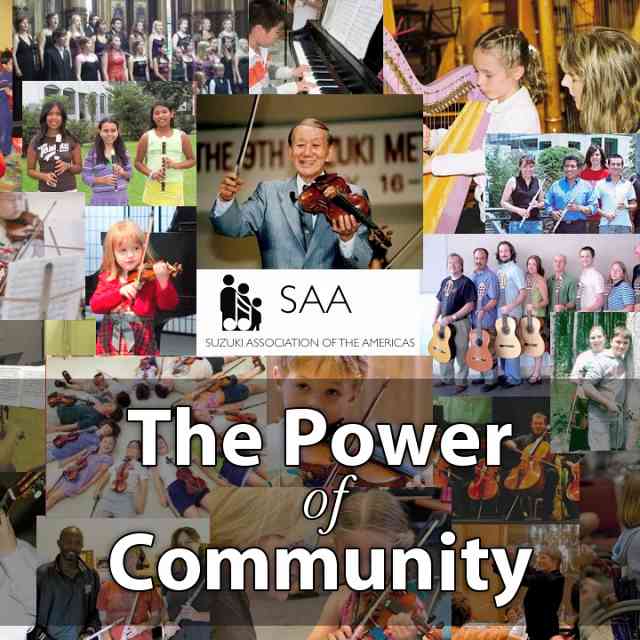The Power of Motivation
How Intrinsic and Extrinsic Factors Shape Teachers and Students
By Nobuaki Tanaka
Struggle to Motivate Students
Teachers face many challenges in keeping students motivated. Whether through praise, encouragement, or structured lessons, teachers continually seek ways to inspire students to grow musically. However, despite their best efforts, frustration often arises when students lose focus or fail to reach the teacher’s expectations.
Although teachers understand that every student should be treated equally, studies show they often respond to students differently, depending on how students meet their expectations. Teachers are guided by the foundational belief that “every child can learn,” which shapes their approach to teaching. Nevertheless, even with this philosophy, teachers may find themselves questioning their abilities to motivate students, especially when faced with disengagement or the pressures of modern life.
Parental involvement plays a crucial role in a child’s musical success. However, as students become busier with extracurricular commitments, it becomes increasingly difficult to maintain consistent practice and lesson schedules. Over time, communication between students, parents, and teachers may diminish, weakening the motivational foundation needed for sustained progress (Akutsu 2020).
Despite teachers’ efforts to create a positive and encouraging environment, lessons often shift their focus to technical skills (Akutsu 2020), which can blur the distinction between traditional and Suzuki methods. When students meet expectations, teachers are more likely to provide opportunities for growth. Yet when students fall short, teachers may become less engaged, leading to a vicious cycle where both teacher and student lose motivation (Boer et al. 2018). Understanding the roots of motivation—both intrinsic and extrinsic—is critical for addressing these challenges and fostering a productive learning environment in music education.
Understanding Motivation in Education
Motivation is essential to both human experience and learning. In music education, understanding what drives students to engage—or disengage—is crucial to their success. Over the past few decades, extensive research has examined intrinsic and extrinsic motivation, offering insights into how students can sustain their musical studies.
Intrinsic motivation refers to participation in an activity driven by inherent satisfaction, such as enjoyment, curiosity, or personal growth, without the expectation of external rewards (Deci 1971; Sakurai 1990). In contrast, extrinsic motivation involves engaging in activities to obtain external rewards, such as material benefits, recognition, or avoiding negative consequences (Locke & Schattke 2019). While intrinsic motivation tends to foster deeper, self-sustained engagement, over-reliance on extrinsic rewards can shift the focus away from internal drive, potentially reducing long-term interest in music learning (Deci 1971).
The study of intrinsic and extrinsic motivation began in 1918 when Woodworth first introduced these psychological concepts. By the 1950s, researchers like Berlyne, deCharms, Festinger, and Harlow conducted experiments exploring the relationship between these two types of motivation. While early studies often used non-human subjects, more recent studies have shown that humans possess a complex ability to balance intrinsic and extrinsic motivation. Differentiating between types of external rewards, such as monetary versus verbal reinforcement, has added nuance to our understanding of how motivation influences behavior (Deci 1971).
Intrinsic Motivation
When students exhibit a high level of intrinsic motivation, they can often sustain their interest and continue working on their activity without the need for external rewards. For example, intrinsic motivation might manifest passively in students who enjoy attending concerts or visiting museums or actively in those who participate in sports, cooking, or other hands-on activities that bring personal satisfaction and enjoyment. Pure intrinsic motivation arises from doing an activity for its own sake without a goal for improvement. However, when a person begins to set their own goals, such as advancing in skill or achieving mastery, intrinsic motivation often combines with extrinsic motivation (Locke & Schattke 2018).
Extrinsic motivation can also sometimes create confusion. Monetary rewards, often used as external motivators, can influence behavior, but their impact varies depending on personal values. For some, monetary incentives are highly motivating, while for others, they may have little effect (Locke & Schattke 2018). The effectiveness of extrinsic rewards depends on how individuals perceive their value.
In music education, maintaining intrinsic motivation is crucial for long-term success. Students who participate in lessons for the sheer joy of playing are more likely to persevere without relying on external rewards. However, students’ intrinsic love for music may diminish if they become overly reliant on extrinsic motivation—whether through competitions, recitals, or external validation. Striking a balance between the two types of motivation is key to fostering sustained engagement and personal growth.
Deci’s Hypothesis and Experiments
Edward Deci, a well-known psychologist in the field of human motivation, proposed two hypotheses about extrinsic and intrinsic motivations. First, he hypothesized that if a person is engaged in an activity driven by intrinsic motivation and then receives an extrinsic reward during the activity, their intrinsic motivation and performance will decrease. The second hypothesis suggests that if a person engages in an intrinsically motivated activity and receives external verbal reinforcement, their intrinsic motivation will be enhanced (Deci 1971).
To test these hypotheses, Deci conducted three experiments: two in a classroom and one in a field setting. All three experiments followed a similar process as the participants were divided into two groups. In the first session, neither group received any reward. In the second session, one group received external rewards while the other did not. In the third session, neither group received any rewards.
The experiments differed in the application of monetary awards. One experiment in the classroom setting involved participants receiving a monetary external reward, while the other involved verbal reinforcement as the reward. In the field experiment, participants received monetary rewards. In these experiments, the monetary rewards temporarily increased motivation, but once the rewards stopped, motivation decreased. On the other hand, participants who received verbal reinforcement maintained their motivation even after the external rewards ended (Deci 1971).
Shigeo Sakurai’s findings supported Deci’s conclusions. His experiment showed that verbal reinforcement is more effective in maintaining intrinsic motivation, as it helps individuals feel a sense of self-determination and competence. In contrast, monetary rewards led to a decrease in intrinsic motivation. Therefore, external rewards can undermine intrinsic motivation when they become the primary reason for engagement (Sakurai 1990). As Deci’s research shows, the role of external rewards is complex. This leads us to consider how teachers can strategically use extrinsic motivators to support their students without undermining intrinsic motivation.
Effect of External Rewards
Finding the cause of students’ loss of intrinsic motivation is crucial. Sometimes it arises from boredom, a repetitive routine, or a mismatch between teacher and students’ expectations. Researcher Mihaly Csikszentmihalyi noted that when people perform repetitive tasks without clear direction, they lose motivation, which leads to self-doubt (Locke & Schattke 2019). Therefore, providing students with clear goals and direction as a form of external reward can be beneficial, especially for those with low intrinsic motivation. Rewards for achieving goals can enhance their sense of competence and validate their learning, and teachers must identify valuable goals for their students (Sakurai 1990). For some, participating in a recital may be a meaningful goal, but for others, it may cause anxiety or seem irrelevant. Teachers should aim to offer a variety of activities to develop their interest, encourage skills growth, and create new opportunities.
Moreover, teachers should provide extrinsic rewards to support students’ self-development and skill growth. The goal should be framed in a way that highlights the meaningfulness of studying music. External motivators, such as upcoming performances, can provide students with both intrinsic and extrinsic motivation, fostering a sense of purpose and driving them to practice and improve. Thus, a balance of intrinsic and extrinsic motivation can help students find purpose in their studying music (Koehler et al. 2023)
The Danger of Intrinsic Motivation
While intrinsic motivation allows students to focus and fully engage in musical training, it does not always guarantee progress (Kang 2022). Intrinsically motivated students often practice independently and gravitate toward activities they enjoy, like repeatedly playing their favorite passage. However, without clear goals, intrinsically motivated students may lack direction and fail to improve despite enjoying their practice (Locke & Schattke 2019).
Setting valuable goals and direction as external rewards can help intrinsically motivated students push themselves further. By challenging themselves with new skills and setting higher goals, they can advance to new levels. This approach not only creates a flow in their learning but also brings greater satisfaction, progress, and meaning to their learning practice (Kang 2022).
When students’ psychological needs for autonomy, competence, and relatedness are satisfied, they experience positive outcomes, such as well-being. As they progress, students choose the activities and can determine their own goals, and they can choose an activity based on both intrinsic and extrinsic motivation (Koehler et al. 2023).
Intrinsic motivation, while essential, can be overrated when used in isolation, and extrinsic motivation is frequently viewed as an undervalued teaching strategy (Locke & Schattke 2019). Extrinsic motivation offers students structure and a sense of purpose, helping them progress in their music education. It is crucial in helping students discover the value of studying music, providing them with reasons to engage and make progress, and can even enhance their intrinsic motivation. Teachers must clearly understand the goals, purpose, and direction of their teaching. Without these three fundamental elements, education risks becoming rudimentary and ineffective.
Motivation in Teaching
More importantly, teachers themselves need to be intrinsically motivated to teach. The reality is that teaching does not often unfold as planned. Most teachers interact with each student once or twice a week, which can severely limit their effectiveness. Additionally, teachers contend with frustrations stemming from school and challenges posed by disengaged students and parents. These pressures can diminish teachers’ motivation, leading to emotional exhaustion and loss of a sense of accomplishment (Ryan & Deci 2020).
Motivated teachers are more likely to inspire their students, fostering an environment where students become more motivated to learn. Teachers who are actively engaged in their teaching and derive satisfaction from their work report experiencing less emotional exhaustion (Ryan & Deci 2020). When teachers cultivate their intrinsic motivation, they are equipped to develop their teaching philosophy and methods. The Suzuki Method is more of a philosophy than a prescriptive technique, and each teacher must adapt it to their context. Motivated teachers have the freedom to innovate and personalize their teaching approaches, leading to greater psychological well-being. Conversely, frustrated teachers may resort to controlling behaviors, negatively impacting their teaching and student engagement (Ryan & Deci 2020).
In conclusion, teachers must prioritize self-care and cultivate supportive environments. Highly intrinsically motivated teachers tend to engage more deeply, focus better, and experience greater teaching satisfaction. When intrinsic motivation wanes, teachers should proactively identify the sources of their frustration and seek feedback or support from colleagues and friends.
Shinichi Suzuki envisioned a teaching method rooted in his philosophy. However, Dr. Suzuki’s philosophy serves only as a foundation; teachers must develop their own methods to unlock their students’ motivation and to serve each student best.
References
Akutsu, Taichi. “Changes after Suzuki: A retrospective analysis and review of contemporary issues regarding the Suzuki Method in Japan,” International Journal of Music Education 38(I) (2020): 18–35.
de Boer Hester, Timmermans Anneke C., & Van der Werf Margaretha P.C. “The Effects of Teacher Expectation Interventions on Teachers’ Expectations and Student Achievement: Narrative Review and Meta-Analysis,” Educational Research and Evaluation 24:3–5 (2018): 180–200.
Deci, Edward. “Effects of Externally Mediated Rewards on Intrinsic Motivation,” Journal of Personality and Social Psychology 18, no. 1 (1971): 105-115.
Hendricks, Karin. “The Philosophy of Shinichi Suzuki: Music Education as Love Education,” Philosophy of Music Education Review 19, no. 2 (Fall 2011): 136–154.
Kang, Sangmi. “An Exploratory Study of Music Teachers’ Flow Experiences Between Performing and Teaching Music,” Journal of Research in Music Education 70, no. 4 (2023): 407–424.
Koehler, Friederike, Marco Warth, Beate Ditzen, and Andreas B. Neubauer, “Motivation to Make Music Matters: Daily Autonomous Motivation, Flow, and Well-Being in Hobby Musicians,” Psychology of Aesthetics, Creativity, and Arts 17, no. 6 (2023): 682–693.
Locke, A. Edwin, Schattke Kasper. “Intrinsic and Extrinsic Motivation: Time for Expansion and Clarification,” American Psychological Association 5, no. 4 (2019): 277–290.
Morris, Laurel S., Mora M. Grehl, Mehta Marishka, L. Margaret Westwater. “On What Motivates Us: A Detailed Review of Intrinsic V. Extrinsic Motivation,” Psychological Medicine 52, no. 10 (2022): 1801–1816.
Ryan, Richard M., Deci Edward L., “Intrinsic Motivation From a Self-Determination Theory Perspective: Definitions, Theory, Practices, and Future Directions,” Contemporary Educational Psychology, 61 (2020): 1–11.
Sakurai, Shigeo. “The Effects of Four Kinds of Extrinsic Rewards on Intrinsic Motivation,” Psychologia 33, no. 4 (1990): 220–229.
Register for the Annual General Meeting!
Jul 19, 2024







